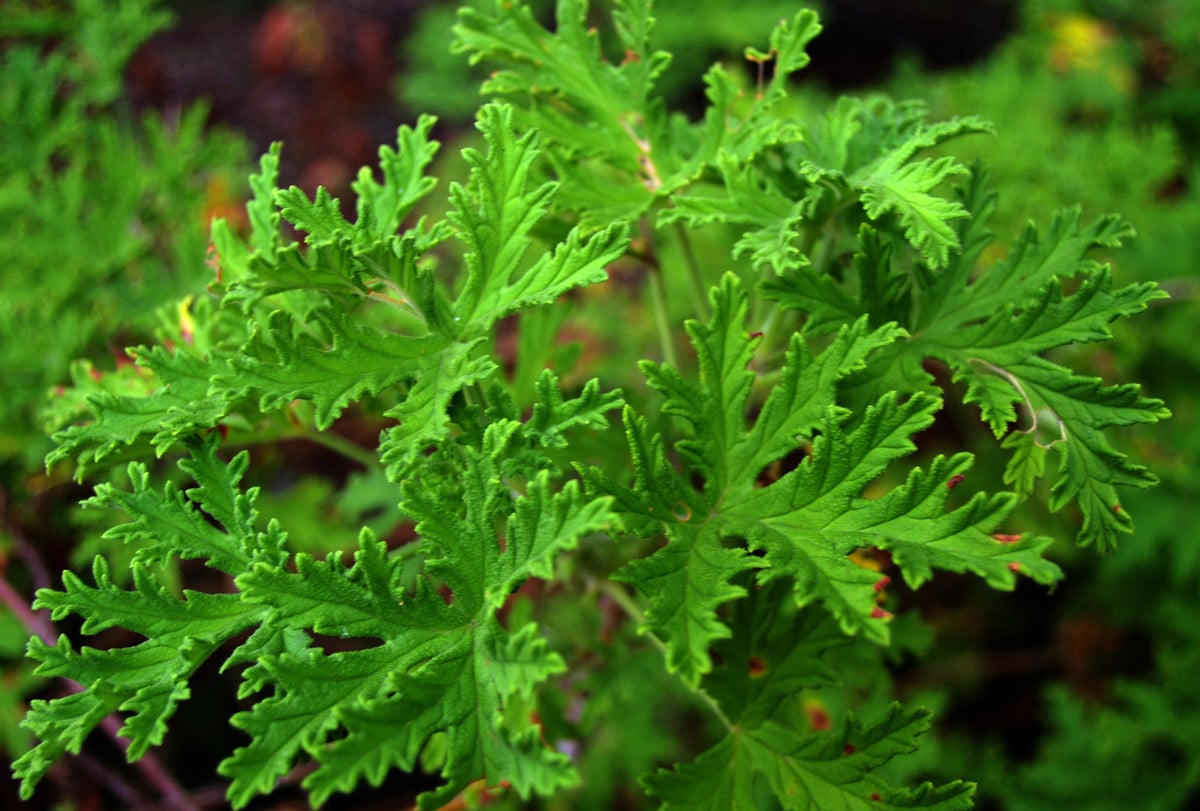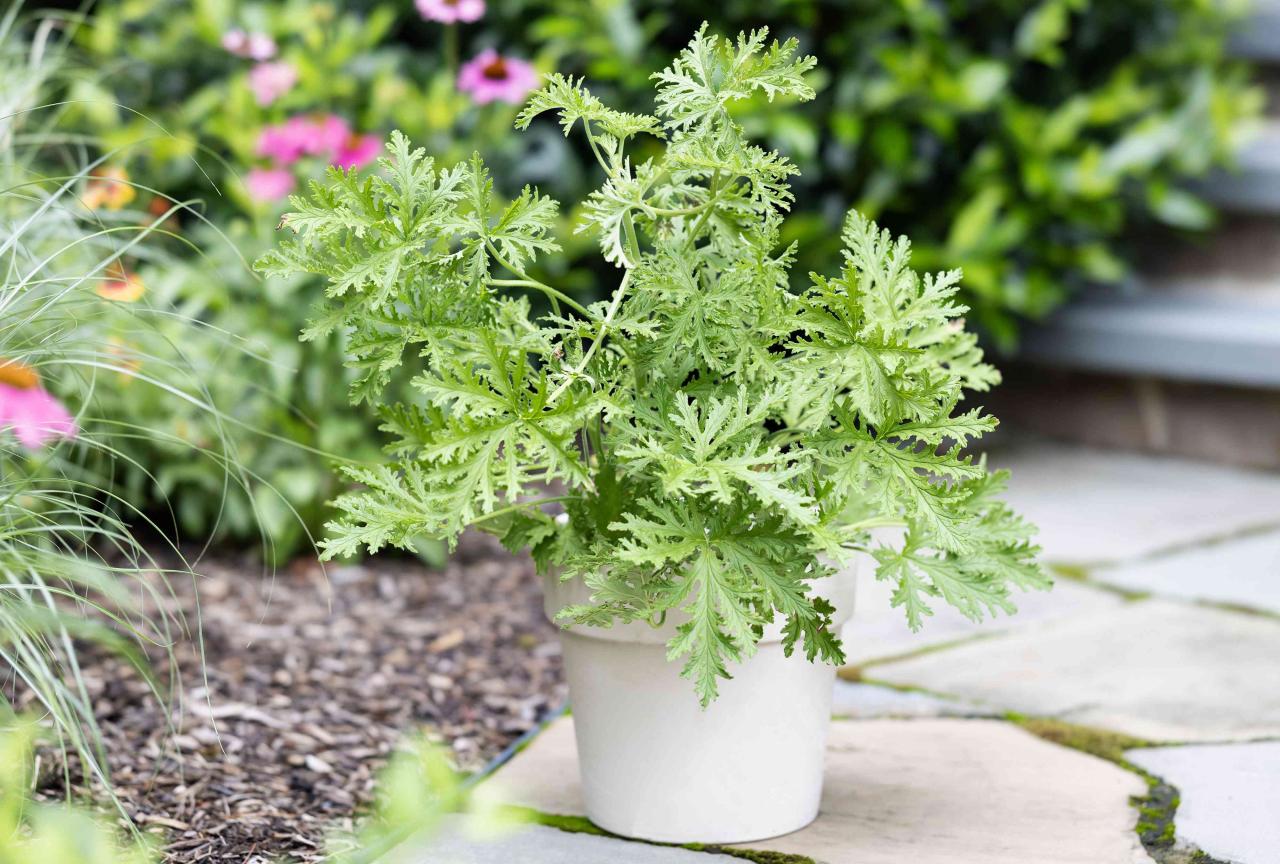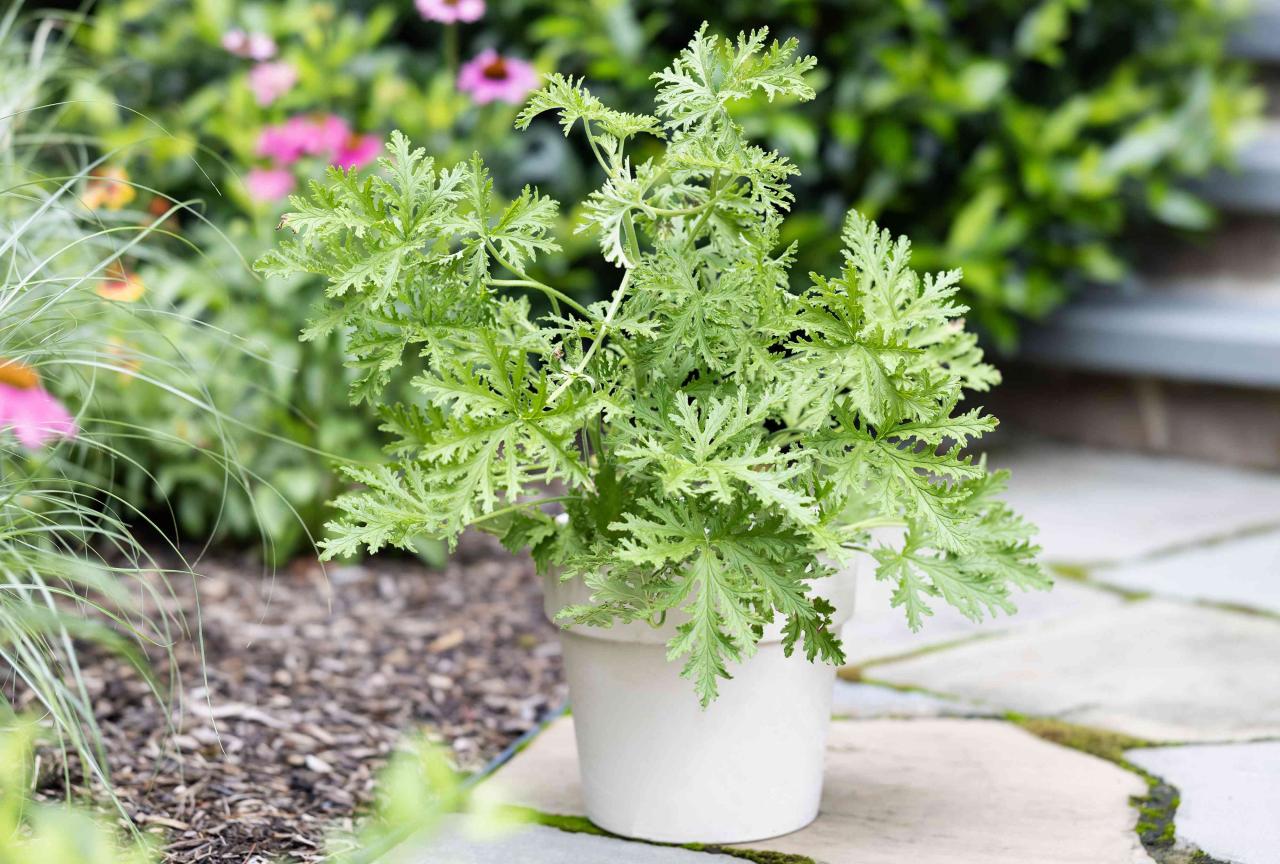Citronella Plant: How to Achieve a Thriving and Fragrant Garden with This Herb, is a comprehensive guide to cultivating this versatile and fragrant plant. From its botanical origins to its diverse benefits, this article explores everything you need to know about growing citronella.
Discover the secrets to creating a thriving and fragrant garden with citronella, a plant that not only adds beauty but also provides natural pest control and potential medicinal properties.
Citronella, a tropical grass known for its distinct lemony scent, has a long history of use in various cultures. Its essential oil is prized for its insect-repelling properties, making it a natural alternative to chemical pesticides. Furthermore, citronella oil has been traditionally used in aromatherapy and for its potential medicinal benefits.
Introduction to Citronella Plants: Citronella Plant: How To Achieve A Thriving And Fragrant Garden With This Herb

Citronella plants, known for their distinct lemony-citrus fragrance, are a popular choice for gardeners seeking to enhance their outdoor spaces while enjoying the benefits of this versatile herb. These plants belong to the genus Cymbopogon, a group of perennial grasses native to tropical and subtropical regions.
Botanical Classification and Origins
Citronella plants belong to the family Poaceae, which encompasses a wide variety of grasses. There are several species of citronella, with the most common being
- Cymbopogon nardus* (Ceylon citronella) and
- Cymbopogon winterianus* (Java citronella). Both species are native to Southeast Asia, specifically Sri Lanka and Indonesia, respectively.
Historical and Cultural Significance
Citronella has a rich history and cultural significance across various regions. In ancient times, citronella oil was used for medicinal purposes in traditional medicine systems of Southeast Asia, India, and China. The fragrant oil was also used in religious ceremonies and as a natural insect repellent.
Physical Characteristics, Citronella Plant: How to Achieve a Thriving and Fragrant Garden with This Herb
Citronella plants are characterized by their tall, slender stems that can grow up to 6 feet in height. Their leaves are long, narrow, and pointed, with a distinctive lemony-citrus scent. The leaves are typically green, but some varieties may exhibit a reddish-brown hue.
Cultivating a fragrant and thriving garden with citronella plants involves understanding the ideal conditions for its growth. Similar to establishing a lush lawn, timing is crucial for success. Just as knowing the best time to sow grass seed, as outlined in How to Determine the Best Time for Sowing Grass Seed: A Guide to a Thriving Lawn , planting citronella in warm weather ensures optimal root development and a flourishing plant.
With the right timing, your garden will be filled with the refreshing scent of citronella, deterring pesky insects and creating a welcoming ambiance.
Citronella plants produce small, inconspicuous flowers that are typically brown or purple in color.
Citronella plants are a popular choice for gardeners seeking to deter pesky insects while adding a delightful fragrance to their outdoor spaces. These hardy herbs thrive in well-drained soil and require minimal care, making them ideal for beginners. If you’re looking to expand your garden beyond citronella, consider exploring the world of ivy propagation, as outlined in this informative article on Growing More Ivy Has Never Been Easier! Propagation Secrets.
Once you’ve mastered the art of ivy propagation, you can return to your citronella plants and enjoy their mosquito-repelling properties while admiring their lush green foliage.
Benefits of Growing Citronella Plants
Citronella plants offer a multitude of benefits, making them a valuable addition to any garden or landscape. From their natural insect-repelling properties to their potential medicinal uses and aesthetic appeal, citronella plants contribute significantly to a thriving and fragrant environment.
Natural Insect Repellent
Citronella’s primary benefit lies in its ability to naturally repel insects. The plant’s leaves contain citronella oil, which emits a strong, citrusy scent that many insects find unpleasant. This makes citronella an effective natural alternative to chemical pesticides.
“Citronella oil has been used for centuries as a natural insect repellent, particularly against mosquitoes.”
The effectiveness of citronella as a repellent can vary depending on factors such as the concentration of oil in the plant, the specific insect species, and environmental conditions. However, its use as a natural deterrent against biting insects like mosquitoes, flies, and gnats is widely recognized.
Potential Medicinal Properties
Citronella oil has been traditionally used for its potential medicinal properties. Studies suggest that citronella oil may possess antimicrobial, antifungal, and anti-inflammatory effects.
“Citronella oil has been shown to inhibit the growth of certain bacteria and fungi in laboratory settings.”
While further research is needed to confirm the efficacy of citronella oil for specific medical conditions, its traditional use as a natural remedy for skin irritations, headaches, and digestive issues continues to be explored.
Aesthetic Appeal
Citronella plants are not only functional but also aesthetically pleasing. Their feathery, grass-like foliage adds a touch of tropical charm to gardens and landscapes.
“The graceful, upright growth habit of citronella plants creates a visually appealing texture and contrast in garden settings.”
The plants can be grown in containers or directly in the ground, making them versatile for various landscaping purposes. Their vibrant green foliage provides a refreshing contrast against other plants and flowers, enhancing the overall beauty of the garden.
Growing Citronella Plants
To cultivate a flourishing citronella garden, it is crucial to understand and provide the optimal conditions for this herb to thrive. This section delves into the essential considerations for successfully growing citronella plants.
Growing Conditions
Citronella plants require specific environmental conditions to flourish. Providing the right combination of sunlight, soil type, and temperature is essential for healthy growth and a bountiful harvest.
- Sunlight:Citronella plants thrive in full sun, requiring at least six hours of direct sunlight daily. They can tolerate some partial shade, but optimal growth occurs in sunny locations.
- Soil:Well-drained soil is crucial for citronella plants. They prefer slightly acidic to neutral soil with a pH range of 6.0 to 7.0. Avoid heavy clay soils that retain moisture, as this can lead to root rot.
- Temperature:Citronella plants are warm-season grasses that prefer temperatures between 70°F and 85°F (21°C to 29°C). They are sensitive to frost and will not survive temperatures below 40°F (4°C).
Propagation Methods
Citronella plants can be propagated using various methods, each with its advantages and disadvantages.
- Seeds:Starting citronella plants from seeds is a viable option, but it can be time-consuming. Seeds should be sown in a seed tray or pot filled with a well-draining seed-starting mix. Keep the soil consistently moist and warm (70°F to 80°F).
Germination typically takes 10 to 14 days.
- Cuttings:Propagating citronella plants from cuttings is a faster and more reliable method. Take stem cuttings, approximately 4 to 6 inches long, from healthy, mature plants. Remove the lower leaves and dip the cut end in rooting hormone. Plant the cuttings in a pot filled with a well-draining potting mix, keeping the soil moist.
Roots will develop within a few weeks.
- Division:Established citronella plants can be divided to create new plants. This method is best performed in the spring or early summer. Gently dig up the plant and carefully separate the root ball into smaller sections, each with healthy roots and shoots.
Plant the divisions in new pots or directly in the garden.
Planting Citronella Plants
Once you have your citronella plants ready, it’s time to plant them in their permanent location. Proper spacing and depth are essential for optimal growth.
- Spacing:Plant citronella plants 12 to 18 inches apart, allowing ample room for growth and air circulation.
- Depth:Plant the citronella plants at the same depth they were growing in their previous container. Ensure that the crown of the plant (where the roots meet the stem) is level with the soil surface.
- Watering:Water the plants thoroughly after planting and continue to keep the soil consistently moist, but not waterlogged.
- Fertilizer:Citronella plants benefit from regular fertilization. Use a balanced fertilizer, such as 10-10-10, every 4 to 6 weeks during the growing season.
Caring for Citronella Plants
Caring for citronella plants is relatively straightforward, involving regular watering, fertilization, and occasional pruning. While these plants are generally hardy, understanding their specific needs and potential issues will help you maintain a thriving and fragrant garden.
Watering
Citronella plants prefer moist soil, but they are also susceptible to root rot if overwatered. Therefore, a consistent watering schedule is essential.
- Water deeply but infrequently, allowing the top inch of soil to dry out between waterings.
- During hot weather, you may need to water more frequently.
- Avoid watering in the late evening, as this can encourage fungal diseases.
Fertilizing
Citronella plants are light feeders and do not require heavy fertilization.
- Apply a balanced liquid fertilizer diluted to half strength every 4-6 weeks during the growing season.
- Avoid over-fertilizing, as this can lead to leaf burn and stunted growth.
- Use organic fertilizers to promote healthy soil and beneficial microbes.
Pruning
Pruning citronella plants is essential for maintaining their shape and encouraging bushier growth.
- Pinch off the top growing point of stems to encourage branching.
- Remove any dead or diseased stems or leaves.
- Prune back the plant in late winter or early spring to encourage new growth.
Common Pests and Diseases
While citronella plants are generally resistant to pests and diseases, they can be susceptible to certain issues.
- Aphids: These small insects can feed on the sap of citronella plants, causing leaf distortion and wilting. Control them with insecticidal soap or a strong spray of water.
- Spider mites: These tiny arachnids can cause yellowing and webbing on leaves. Treat them with insecticidal soap or a miticide.
- Root rot: Overwatering can lead to root rot, which can cause wilting and leaf drop. Ensure proper drainage and avoid overwatering.
- Leaf spot: This fungal disease can cause brown spots on leaves. Remove infected leaves and treat with a fungicide.
Harvesting
Citronella leaves and stems are harvested for their oil, which is used in a variety of applications, including insect repellents, aromatherapy, and perfumes.
- Harvest leaves and stems when the plant is in full bloom, as this is when the oil content is highest.
- Cut the leaves and stems with sharp shears or scissors, leaving about 4 inches of stem remaining.
- Allow the harvested material to dry in a cool, dark, and well-ventilated area.
- Once dried, the leaves and stems can be used for oil extraction or as a natural insect repellent.
Creating a Thriving and Fragrant Garden with Citronella
Citronella’s insect-repelling properties are a boon to any garden, but its fragrant foliage and attractive growth habits also make it a visually appealing addition. By strategically incorporating citronella into your garden design, you can create a thriving and fragrant oasis that’s both beautiful and pest-resistant.
Companion Plants for a Thriving Garden
Pairing citronella with compatible plants can enhance its growth and further deter pests.
- Marigolds:These bright blooms attract beneficial insects like ladybugs, which prey on aphids and other garden pests. Marigolds also repel nematodes, tiny worms that can damage roots.
- Basil:This herb has a strong aroma that repels mosquitoes and flies. Basil also attracts beneficial insects like wasps, which can help control caterpillars and other pests.
- Rosemary:This fragrant herb is known to deter aphids, whiteflies, and other insects. It also attracts beneficial insects like parasitic wasps, which help control caterpillars and other pests.
- Lavender:This aromatic herb is a natural insect repellent, and its beautiful purple flowers add a touch of elegance to any garden.
- Catnip:While it’s known for attracting cats, catnip also repels mosquitoes and other insects. It also attracts beneficial insects like ladybugs and lacewings.
Incorporating Citronella into Garden Designs
Citronella’s versatility allows it to be incorporated into various garden designs, enhancing both aesthetics and functionality.
- Borders:Plant citronella along the edges of your garden beds to create a natural barrier against pests. Its tall, upright growth habit creates a visually appealing border.
- Containers:Grow citronella in pots or planters to add a fragrant touch to patios, balconies, and other outdoor spaces. This is especially useful for repelling mosquitoes and other insects in these areas.
- Hedges:Plant citronella in rows to create a fragrant hedge that adds privacy and security to your garden. Its dense foliage provides a natural barrier against unwanted pests.
Fragrant Citronella Garden Design
Plant Name |
Description |
Planting Tips |
Care Requirements |
|---|---|---|---|
Citronella Grass (Cymbopogon nardus) |
Tall, upright grass with fragrant, lemon-scented foliage. Repels mosquitoes and other insects. |
Plant in full sun to partial shade. Prefers well-drained soil. |
Water regularly, especially during dry periods. Fertilize monthly during the growing season. |
Marigold (Tagetes spp.) |
Brightly colored flowers that attract beneficial insects and repel nematodes. |
Plant in full sun to partial shade. Prefers well-drained soil. |
Water regularly, especially during dry periods. Deadhead spent flowers to encourage more blooms. |
Basil (Ocimum basilicum) |
Aromatic herb with a strong scent that repels mosquitoes and flies. |
Plant in full sun to partial shade. Prefers well-drained soil. |
Water regularly, especially during dry periods. Pinch back stems to encourage bushier growth. |
Rosemary (Salvia rosmarinus) |
Fragrant herb that repels aphids, whiteflies, and other insects. |
Plant in full sun to partial shade. Prefers well-drained soil. |
Water regularly, especially during dry periods. Prune back stems to maintain shape. |
Lavender (Lavandula angustifolia) |
Aromatic herb with beautiful purple flowers that repel insects. |
Plant in full sun to partial shade. Prefers well-drained soil. |
Water regularly, especially during dry periods. Prune back stems after flowering to encourage new growth. |
Closing Summary

By understanding the basics of citronella plant care and incorporating it into your garden design, you can create a beautiful and fragrant oasis that thrives naturally. Whether you’re seeking a natural insect repellent, a beautiful addition to your landscape, or simply a plant that adds a touch of tropical charm, citronella offers a wealth of benefits.
Start your journey to a thriving and fragrant garden today with this versatile and rewarding plant.
FAQ Summary
What is the best time to plant citronella?
The best time to plant citronella is during the spring or early summer when the soil has warmed up and the threat of frost has passed.
How often should I water my citronella plant?
Water your citronella plant regularly, especially during dry periods. Aim to keep the soil consistently moist but not waterlogged.
Can I grow citronella indoors?
Yes, citronella can be grown indoors in a sunny window or under grow lights. However, it may not thrive as well as it does outdoors.
How do I harvest citronella leaves for oil extraction?
Harvest citronella leaves when they are mature and fragrant. Cut the leaves just above the soil level and allow them to dry before extracting the oil.
